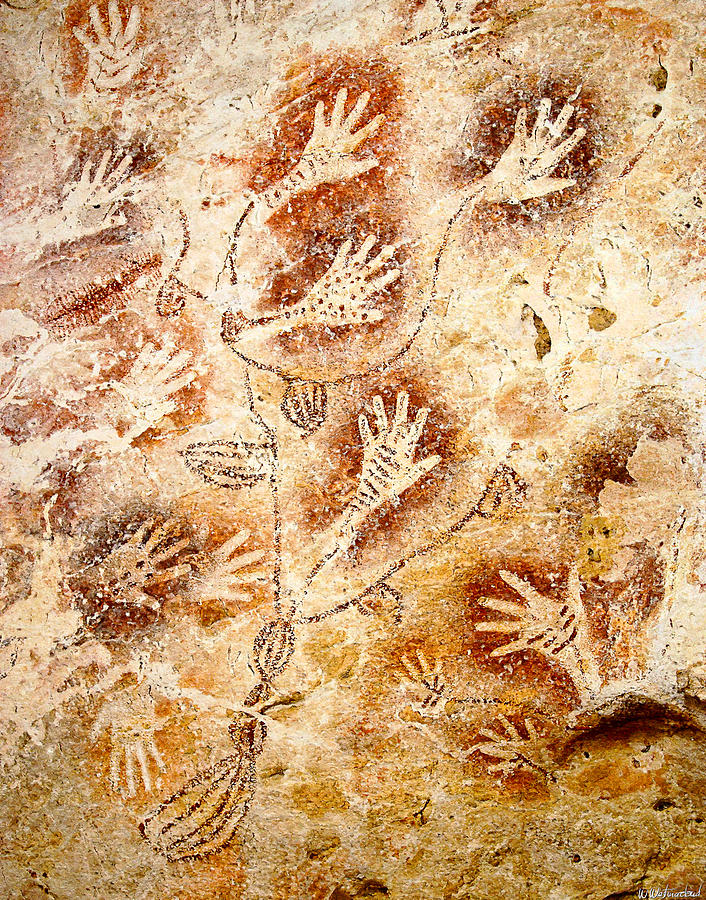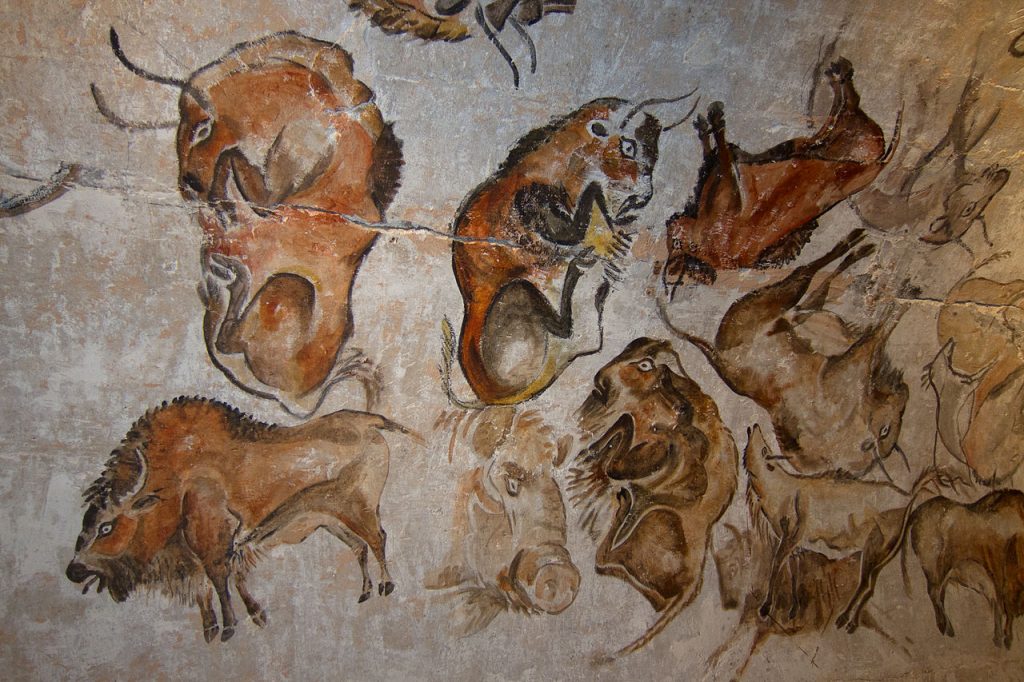An introduction to the Palaeolithic art and tools.
“Decorated Caves” or cave art was a global phenomenon that went on throughout the Stone Age specifically in the Palaeolithic Period; the Lower Palaeolithic (to 40,000 BC) and the Upper Palaeolithic (40,000–8000 BC) (Singh, Hermant). For a long time it was thought that Europe was the initial birthplace of prehistoric cave paintings. Paintings of mammoth, bisons and reindeer were first discovered in the 19th century in the caves of Northern Spain Altamira, and Southern France Lascaux, with “lifelike representations of animals” (E.H Gombrich, 39). but the oldest form of Palaeolithic art that has been discovered is in Indonesia in the “Lubang Jeriji Saléh” cave circa 40,000 BC.
Initially in early cave art we see neanderthals spraying pigment around their hands and shapes creating a sort of stencil outline. Cave art today has been discovered on every continent in the world with the exception of Antarctica.

image Gua Tewet “Tree of Life” early cave art. 
cave art in Lascaux caves in Northern Fr 
It has been observed by researchers that common tools throughout this period were made out of bone, stone and wood. Later developing in to more complex weapons such a spears and flints. In fact the Palaeolithic period is characterized by the creation, progression and use of these tools.

Throughout this period materials for art that could flake easily were intentionally sought after and applied with wood, hands, or animal fur. Pigments such as ochre, a clay yellowish pigment, chalk or charcoal were mixed in mouths, blended with fats and applied to the walls. Neanderthals would sometimes, they would go to great lengths and travel long distances to acquire materials such as Manganese, that could only be acquired in the Pyrenees Mountains.
The purpose of cave paintings is unknown and wildly debated throughout history with no real consensus. Perhaps it will always remain a mystery, but there are some prominent theories surrounding the infamous cave art. Through observations of current subsistent communities it has been hypothesized that the art was somewhat of a spiritual visualization and setting intention, to attract and capture the prey that they were visually rendering. Others believe it was strictly a ritualistic, spiritual or religious approach. Perhaps the most simplistic of ideas is that there was no reason at all, this was purely arbitrary and done because they simply wanted to do it.
One of the most perplexing facts about these murals to this day is the seemingly intentional placement of these petroglyphs in difficult places to reach. A lot of these paintings appear to be methodically placed in remote and high areas of these taverns. In fact some paintings are so high that some sort of engineered platform would have been needed to reach it. This coupled with the complicated and diverse mixing and usage of pigments really provides a strong argument against those who simply see this point in history as one of savagery and simplistic survival.
Citations:
Gombrich, E.H. The Story of Art Revised London, Phaidon 16th Edition, 1995
“Paleolithic art.” The Columbia Encyclopedia, Paul Lagasse, and Columbia University, Columbia University Press, 8th edition, 2018. Credo Reference, https://ezproxy.capilanou.ca/login?url=https://search.credoreference.com.
